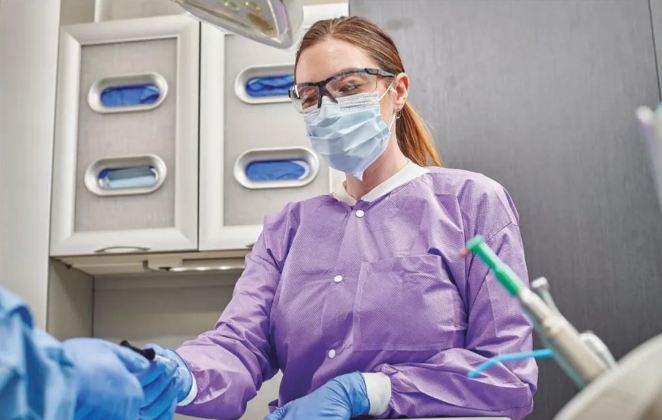Because October is officially National Dental Hygiene Month, right now is the perfect time for practice owners to recognize the hard work of dental hygienists and raise greater awareness of the need for the vital services hygienists perform in preventing oral disease and improving the health of the public.
Dental hygienists are ambassadors for the practices they work for, and they do so much more than scale teeth. In addition to the many clinical duties they perform, hygienists bridge communication gaps between patients and dentists, assist patients in overcoming barriers to care, provide personalized oral hygiene education, and, in some offices, help patients understand their treatment options and navigate insurance benefits. Patients spend the most time with hygienists and tend to form trusting relationships with them.
Industrious, compassionate, and intelligent, a dental hygienist who works well with a dental team is a genuine asset who deserves recognition and support.
The Brief Yet Dynamic History of Dental Hygiene
Archaeological evidence indicates that dentistry has been practiced by humans for millennia. In comparison, dental hygiene as a discipline is a recent invention. A Connecticut dentist named Alfred Fones is widely credited as the initiator of dental hygiene services. He realized the need for dedicated preventative care and trained his cousin Irene Newman to perform dental prophylaxis. This innovative move paved the way for the establishment of the United States’ very first dental hygiene program in 1913, and Irene Newman graduated from it as America’s first licensed dental hygienist in 1917.
By 1923, the American Dental Hygienists’ Association was formed. The term “registered dental hygienist” came into use in 1940, and every state had licensed dental hygienists by 1952.
Over the past 110 years that dental hygienists have been rendering care, the profession has seen the advent of specialized scaling instruments and ultrasonic and air-powered handpieces, innovation in ergonomics and treatment field visualization, advances in our understanding of the mechanism of oral disease, and increasing opportunities for hygienists to offer expanded services and advance their professional careers. In the scheme of things, that’s a short period of time, highlighting the speed at which the dental hygiene profession has evolved and continues to progress. Dental hygienists today are keen to stay current with the latest medical research and technological developments that relate to their field. And they’re quick to adopt new products and techniques that help them continue to provide the best care.
Hygienists and Patient Education
Patient education is still an essential part of oral healthcare, as evidenced by the large numbers of people who don’t prioritize the care and treatment of their teeth and gums. Many feel that they can only maintain their oral health if they have the luxury of time and money to do so.
Education is key to helping patients understand the close connection between their oral health and overall health, and dental hygienists serve as the primary providers of this education. Hygienists help patients to understand that good oral hygiene and regular dental cleanings and exams require a small investment compared with the cost of treating dental problems as they arise.
Patient education involves more than counseling patients to brush and floss. Hygienists use their training, experience, and empathy to help patients discover the best oral hygiene techniques to suit their individual needs, abilities, and circumstances. They can recommend specific products and demonstrate effective techniques, and sometimes they have to get inventive to find what works best for individual patients. Perhaps most importantly, dental hygienists provide valuable moral support to their patients, helping them understand the state of their own oral health and how to monitor their progress.
The education provided by these chairside cheerleaders isn’t limited to the oral environment; hygienists also provide patients with nutrition counseling, instruct them how to check for signs of oral cancer, and promote cessation of harmful habits like tobacco use. Dental hygienists review medical and dental histories and alert patients to signs of other health concerns that may need medical attention.
Equip Hygienists with the Right Products
Having the right clinical products and equipment aids patient comfort, improves outcomes, increases hygienist fatigue and injury. Ultimately, patients benefit from better quality of care and hygienists gain more enjoyment from their work. Consider adding some preventative products to your practice’s inventory to enhance the preventative oral care experience in your practice both for your patients and your hygienists.








You must be logged in to post a comment.